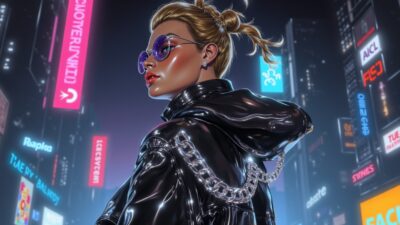Introduction: Not Just Filters — Full Fabrications
In 2025, the influencer economy is facing an identity crisis — literally.
A growing number of the personalities flooding your feed aren’t people at all. They’re fully AI-generated influencers — running brand deals, pushing fashion drops, and DMing fans without ever logging into a real account. From Instagram to TikTok to virtual pop-ups in the metaverse, digital humans are becoming tastemakers.
And most followers don’t even realize it.
1. What Are Virtual Influencers in 2025?
Virtual influencers are:
- AI-generated avatars (hyperreal or stylized)
- Managed by creative teams, brands, or even DAOs
- Fully automated in content generation, scheduling, and even fan interaction
The top ones include:
- Luna.EXE – a cyber-pop icon who just signed a perfume deal
- Remy Zero – a sportswear AI model with 3M followers on TikTok
- Hana404 – a Japanese virtual streetwear muse powered by GPT-5
2. Why Are Brands Going Virtual?
The perks:
- Zero drama — no scandals, no off-brand posts
- Full control over messaging, look, and tone
- 24/7 content output without burnout
Brands like Nike, LVMH, and Samsung now run hybrid campaigns with human and virtual ambassadors. The future of influence is programmable.
3. Fans Don’t Mind — and Often Prefer It
Surveys show:
- 61% of Gen Z can’t tell the difference between real and virtual influencers
- 48% say they’d rather follow a digital creator with “consistent aesthetics”
- Top comments on virtual influencer posts: “perfect vibes,” “not toxic,” and “I trust you more than real people”
Authenticity has been replaced by curated stability.
4. AI Personalities Now Do More Than Just Post
Leading virtual influencers:
- Host metaverse concerts
- Star in anime or video games
- Collab with music AI to drop singles
They’re not just faces — they’re IP franchises in motion.
5. What Powers Them?
Behind the scenes:
- LLMs for dialogue and captioning
- Unreal Engine + AI mocap for animation
- Prompted art models for outfits and environments
- Crypto wallet integration for tipping, NFTs, and fan-gated content
Some even run on-chain revenue splits with their creators or communities.
6. The Ethics Are… Murky
Questions still linger:
- Should virtual influencers disclose their nature?
- Are they replacing real jobs?
- Can they be held accountable for endorsements?
One thing’s clear: they’re not going away.
Conclusion: Welcome to the Age of Algorithmic Aesthetics
In 2025, the influencer isn’t always human — and maybe never was.
The next fashion icon, crypto shiller, or lo-fi music curator you follow might not have a heartbeat. But they will have flawless engagement, on-brand messaging, and a growing network of followers who don’t care.
And in the attention economy, that’s all it takes.
Virtual Influencers Are Taking Over Your Feed — And You Might Not Even Know It
The content, Virtual Influencers Are Taking Over Your Feed — And You Might Not Even Know It, published on Mugen:City is for informational and entertainment purposes only.
We do not offer financial advice, investment recommendations, or trading strategies.
Cryptocurrencies, NFTs, and related assets are highly volatile and risky — always DYOR (do your own research) and consult with a professional advisor before making any financial decisions.
Mugen:City, its writers, and affiliates are not responsible for any losses, damages, or financial consequences resulting from your actions.
You are fully responsible for your own moves in the degen world. Stay sharp, stay rebellious.





